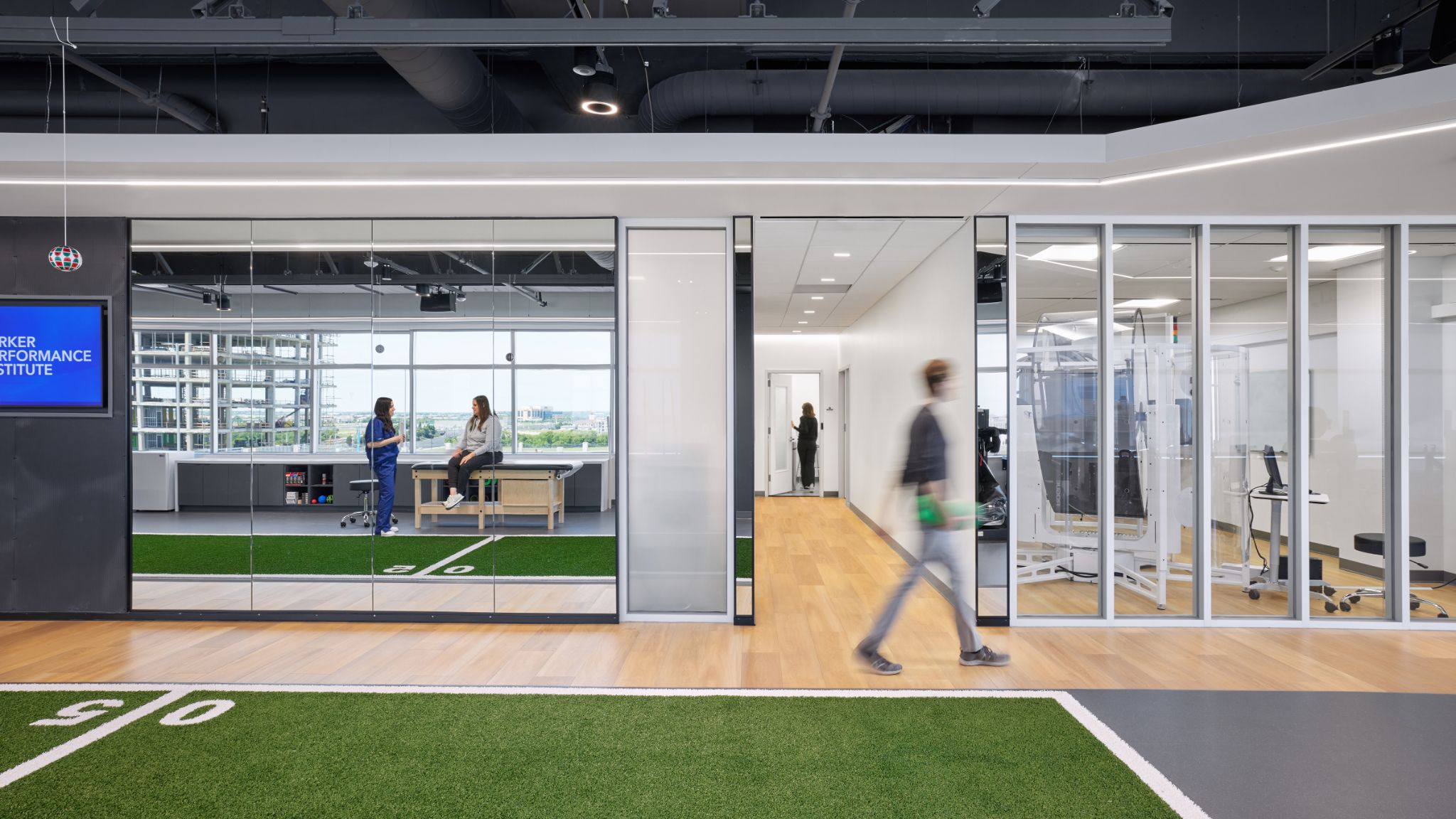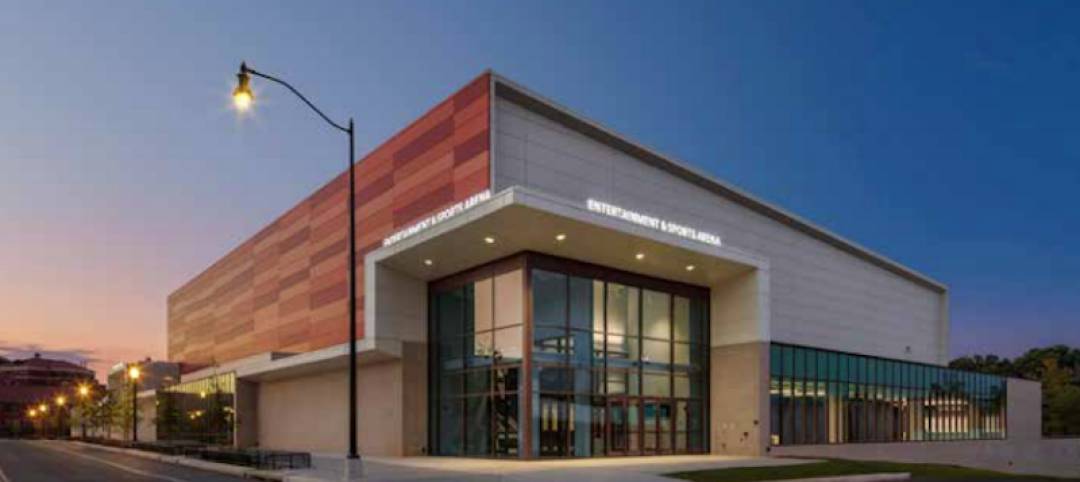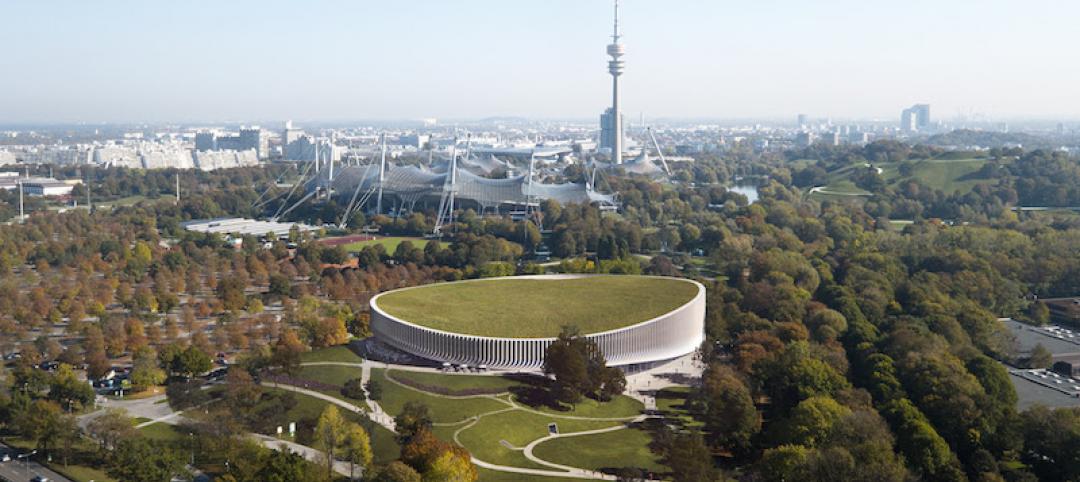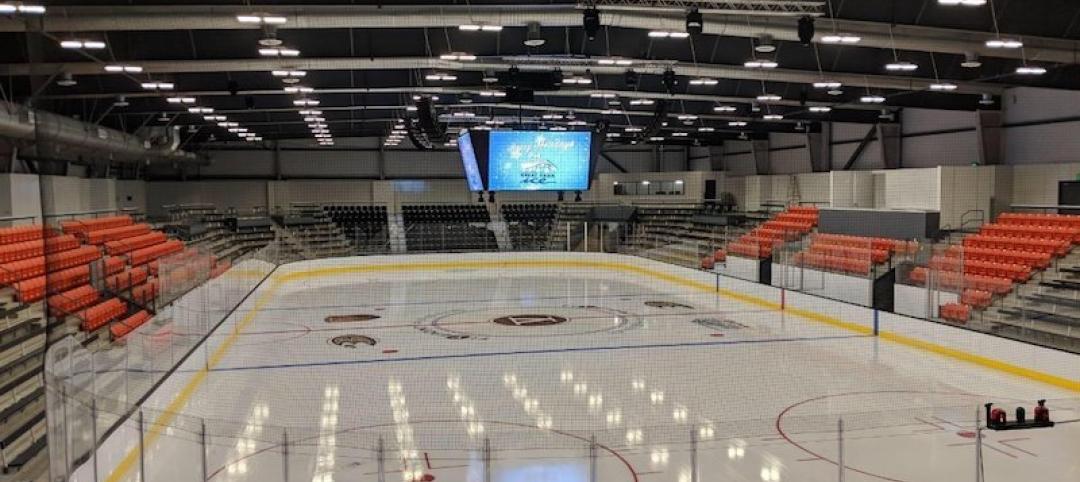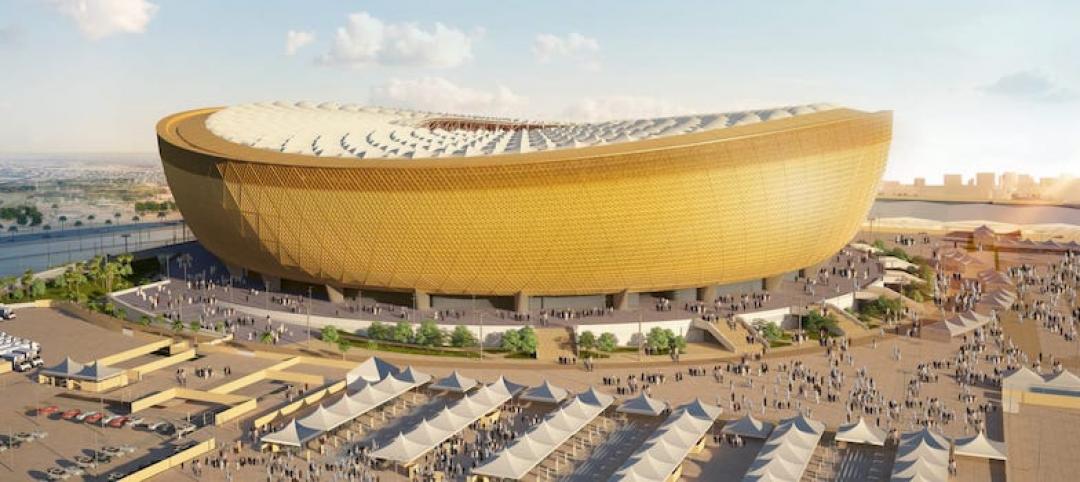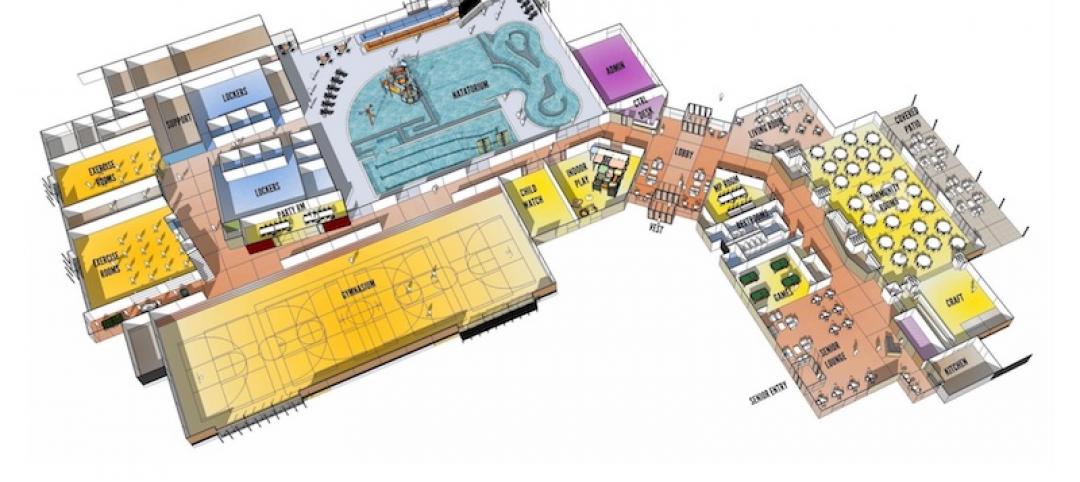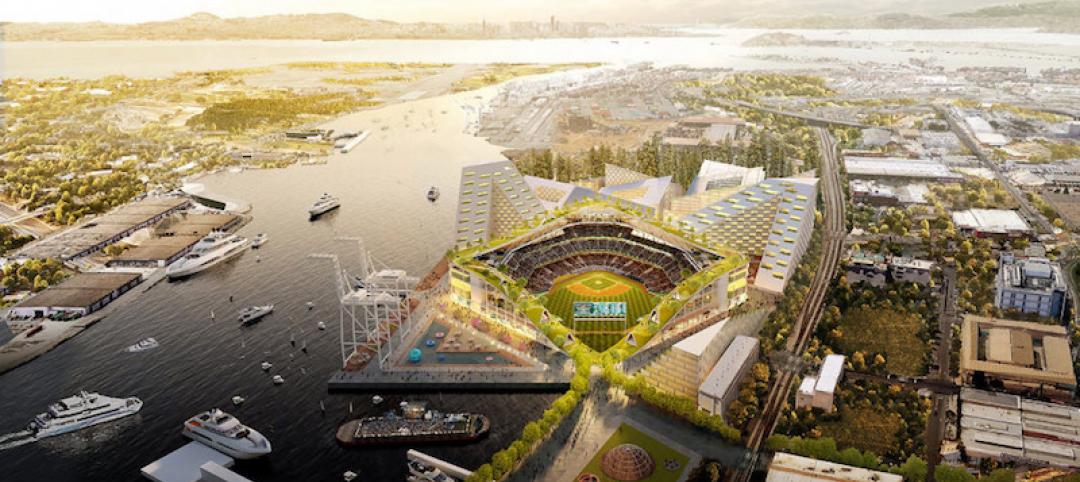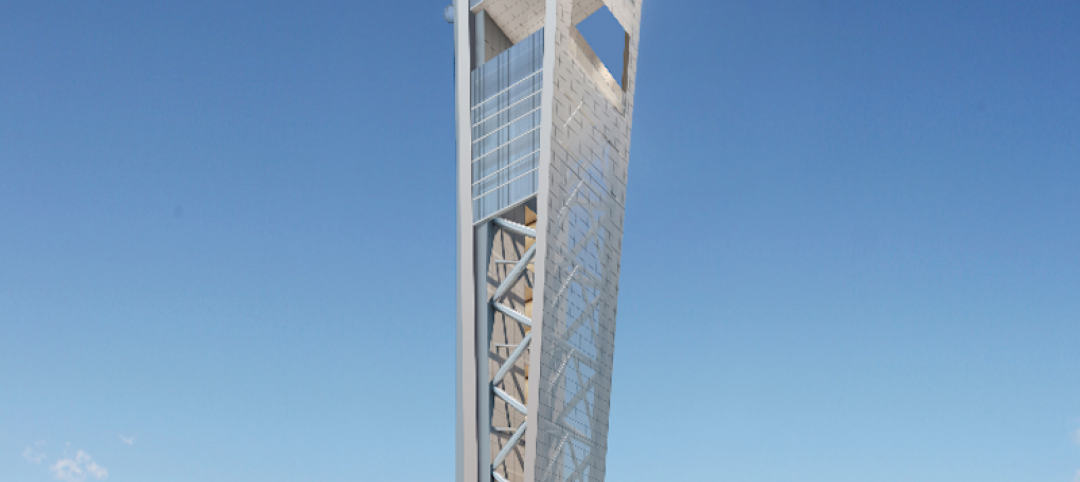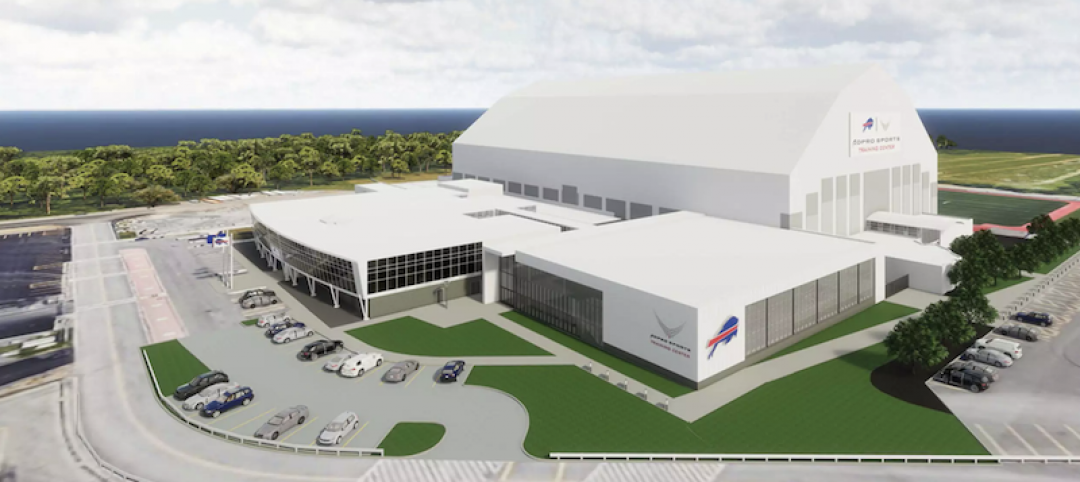Parker Performance Institute in Frisco, Texas, is billed as a first-of-its-kind sports and rehabilitation clinic where students, specialized clinicians, and chiropractic professionals apply neuroscience to physical rehabilitation. Offering high-tech, cutting-edge treatment, the facility combines the vibrant atmosphere of a training gym with the healing qualities of a spa.
The building is organized into two zones, each with a distinct character. The Open Performance Zone is a high-energy space embodying athleticism and vigor with dark metal accents, turf, digital displays, and a sense of expansiveness despite a relatively small, elongated space. Designers used mirrors, exposed structural components, and natural light to animate this half of the interior. This space emphasizes cutting-edge technology.
The interior is composed of healing and massage rooms, with bright tones and indirect, color-changing circadian lighting that is customizable for patients, offering a soothing retreat. The facility provides intuitive navigation with a continuous light running above the core circulation path that is defined by a detailed feature wall.
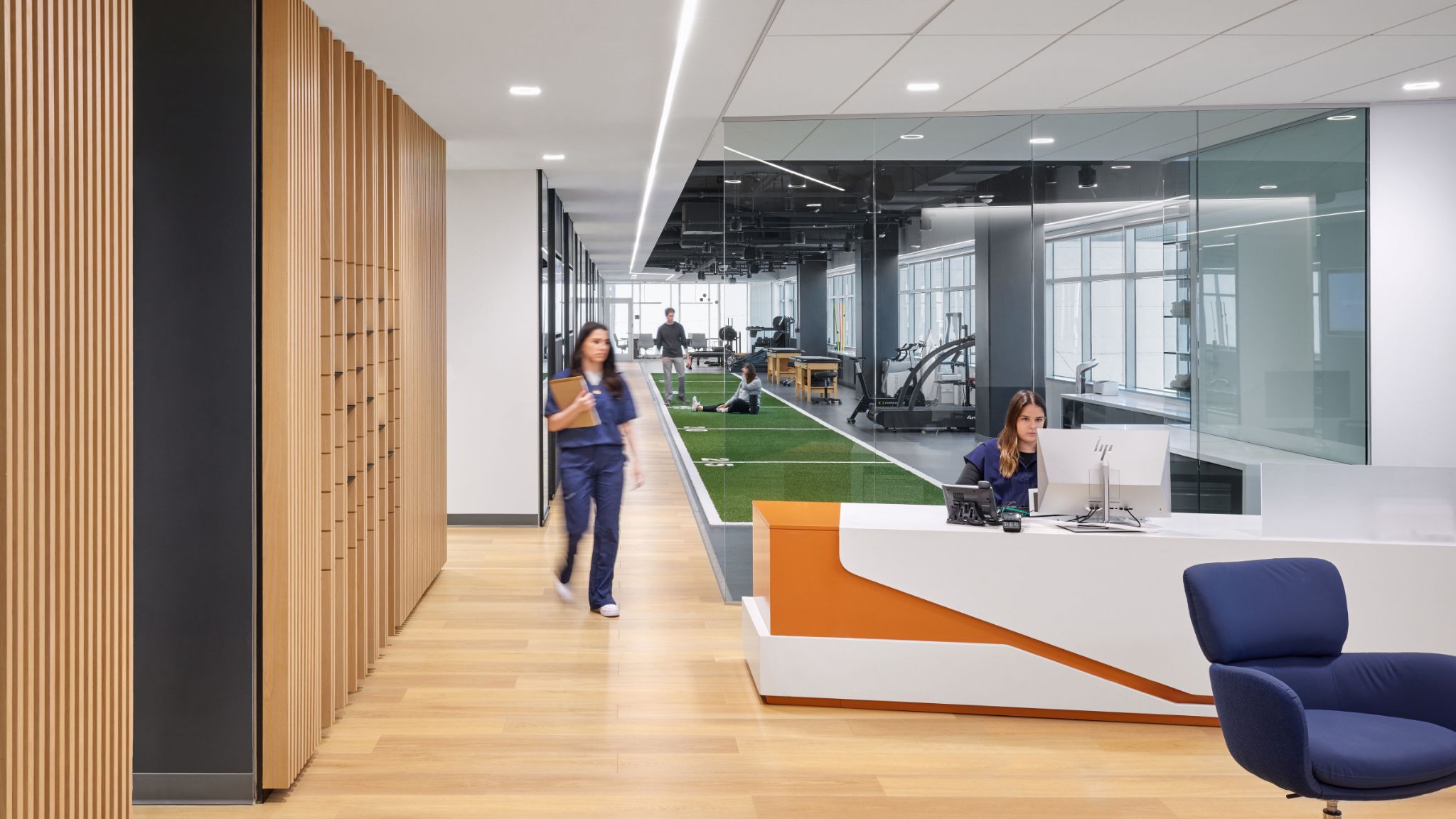
These features mark the transition from the communal, highly visible training area to the zone of private care. A pattern of wood slats along the wall—also incorporating metal mesh and steel trim—creates a warm material rhythm that guides patients through the full length of the space. Branching off the main path are clean, bright pods of exam rooms with neurological and visual equipment used for light therapy, vertigo treatment, and specialized treatments for PTSD patients.
Parker Performance uses advanced tools not commonly available in clinics, from dynamic posturography and virtual reality to 3D diagnostics. The design balances this tech-forward environment with human touches, not losing sight of the emotional side of performance and recovery.
Light is strategically layered throughout to ground the experience as you walk through the building. Tall windows pull sun into the open athletic zone and translucent materials transmit natural light deeper into the space offering privacy without losing the glow of daylight.
On the team:
Owner and/or developer: Parker University
Design architect: Perkins&Will
Architect of record: Perkins&Will
MEP engineer: Purdy-McGuire
General contractor/construction manager: Skiles Group
Related Stories
Sports and Recreational Facilities | Feb 25, 2019
D.C.’s new 3-in-1 entertainment and sports arena
Rossetti and Michael Marshall Design designed the venue.
Sports and Recreational Facilities | Feb 18, 2019
New multipurpose arena in Munich will be topped with a green roof
3XN Architects is designing the project.
Sports and Recreational Facilities | Feb 6, 2019
New ice-skating facility in southern California built to endure seismic events
Great Ice Park and FivePoint Arena include four ice rinks.
Sports and Recreational Facilities | Dec 17, 2018
Qatar unveils Lusail Stadium for 2022 FIFA World Cup
The stadium will be at the center of an entirely new city.
Sports and Recreational Facilities | Dec 6, 2018
Rec centers proliferate as community hubs
Taxpayers and other investors accept the economic and social value in these complexes.
Sports and Recreational Facilities | Dec 4, 2018
Oakland A’s unveil plans to build Bjarke Ingels-designed urban ballpark
The team will also redevelop the Coliseum site.
Sports and Recreational Facilities | Oct 30, 2018
Florida’s tallest building could begin construction next spring
SkyRise Miami to offer some hair-raising attractions.
Giants 400 | Oct 12, 2018
Sports venues reach outside their walls
Professional and collegiate facilities invite fans to engage with the community.
Sports and Recreational Facilities | Aug 9, 2018
Populous-designed Buffalo Bills training center expansion will begin construction this fall
Arc Building Partners will lead construction efforts on the project.
| May 24, 2018
Accelerate Live! talk: Security and the built environment: Insights from an embassy designer
In this 15-minute talk at BD+C’s Accelerate Live! conference (May 10, 2018, Chicago), embassy designer Tom Jacobs explores ways that provide the needed protection while keeping intact the representational and inspirational qualities of a design.


